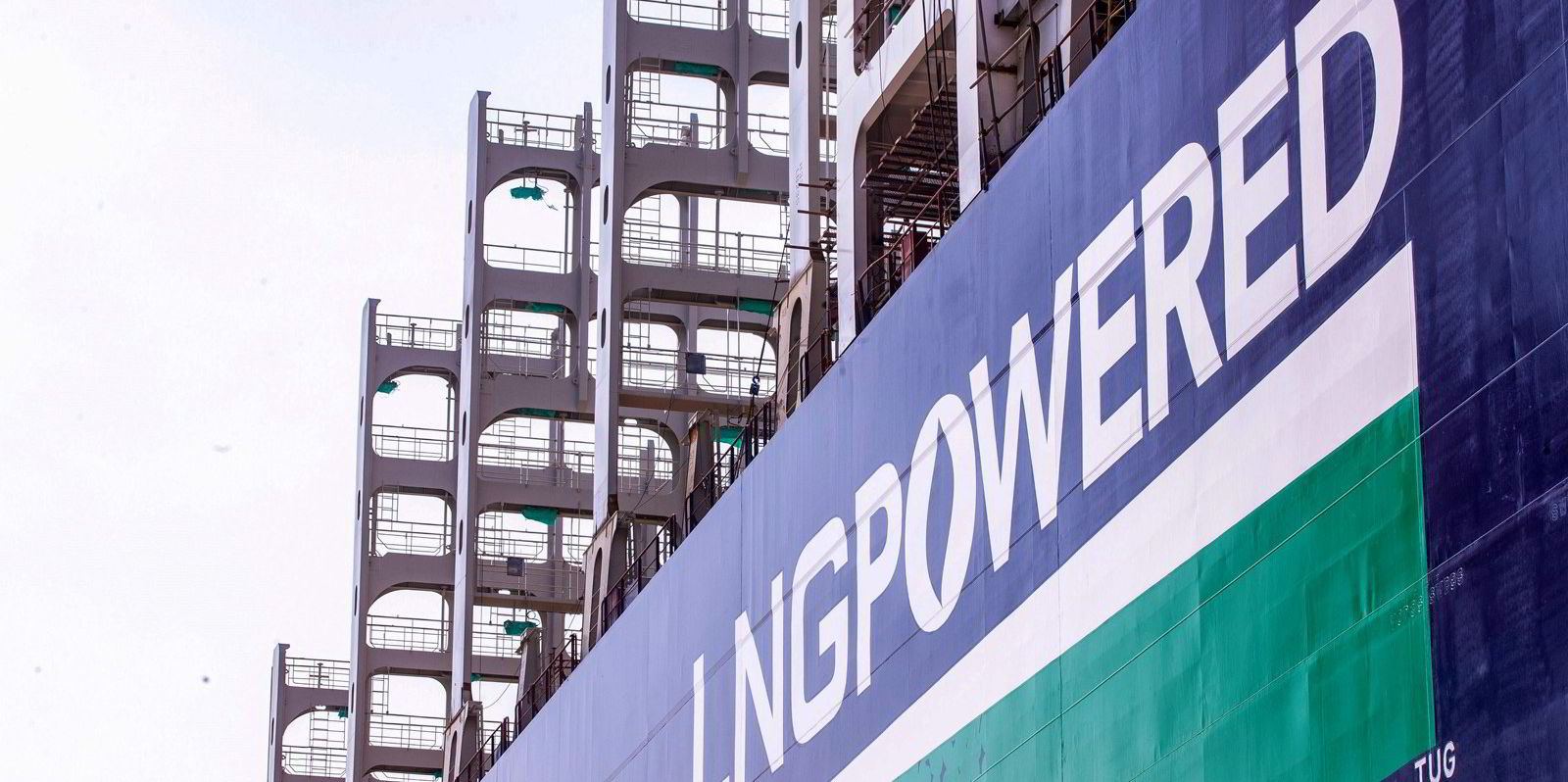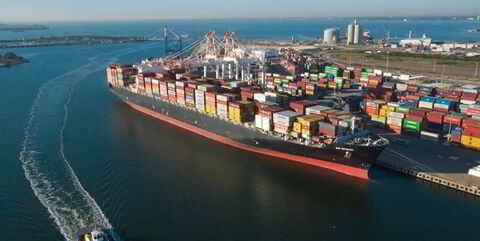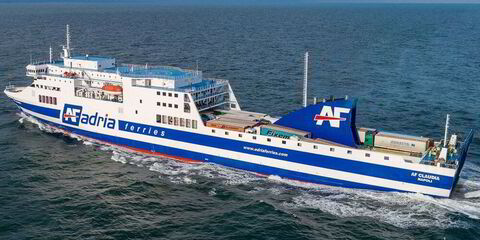Shipowners looking to order LNG-fuelled newbuildings could face the risk of the vessels becoming stranded assets if policymakers push shipping towards zero-emission fuels, a new study has found.
The study by University College London’s UCL Energy Institute revealed that, depending on the course that shipping’s decarbonisation takes, the value at risk of being stranded could range from $129bn to $848bn in 2030.
An asset is considered stranded when its value is written down prematurely, that is, before the end of its planned lifespan.
The higher end of that risk estimate is based on several “big ifs”, including the assumption that LNG-fuelled vessels cannot be retrofitted to run on zero-carbon alternatives.
“We show that if there is a large uptake of LNG-capable ships … which is a big if, and if the shipping industry is to remain within a 1.5-degree trajectory, and this is a second big if, then, yes, indeed, there is a big value at risk of LNG fuel ships in 2030,” said lead author Marie Fricaudet, a PhD student at UCL.
But the researchers pointed to other scenarios.
If the industry moves toward retrofitting LNG-fuelled ships and those that run on low-sulphur fuel oil to ammonia power, this would lead to $129m in stranded assets. That is because the natural gas-powered ships would lose their value premium compared to conventionally fuelled vessels, UCL found.
That rises to $210bn if ammonia newbuildings hit the water and the competition pushes down the secondhand value of LNG-fuelled vessels.
The stranded value risk also creates another potential problem: it creates the risk to shipping’s low-carbon transition because it increases the cost of decarbonisation and creates incentives to resist aligning the industry with the goal of keeping global warming below 1.5C, the authors found.
Minimising the risk
“To minimise these risks, investors (shipowners and financiers) should consider not ordering LNG-capable ships and investing in conventionally fuelled ships which are designed for retrofit to zero-emission fuels,” they wrote.
For owners of existing LNG-fuelled vessels, preventing their ships from becoming stranded assets could involve retrofitting to new fuels down the road or depreciating their vessels at a faster rate to assume a shorter useful lifespan, UCL said.

“The rule of thumb of having depreciation of a shape over 20 to 25 years might not hold true anymore. So maybe you have to consider depreciation curves more like 15 years or 10 years,” Fricaudet told TradeWinds.
LNG’s role as a transition fuel in shipping’s decarbonisation has been coming under increasing scrutiny because its main ingredient, methane, is a more potent greenhouse gas than CO2.
| Scenario | Stranded value for LNG-fuelled fleet |
| Uptake of bio-LNG and e-LNG and availability at prices competitive to ammonia | $0 |
| Retrofitting to ammonia and competition with LSHFO | $129bn |
| Retrofitting to ammonia and competition with ammonia newbuildings | $210bn |
| Retrofit impossible | $848bn |
While current regulations can incentivise LNG-capable vessels now, UCL said achieving the aims of the Paris Agreement requires moving away from LNG as a fuel.
Proponents of the fuel, however, contend it provides CO2-equivalent emissions reductions now while opening the door for use of renewable LNG, made of biofuel or synthetic e-methane, in the future.
In addition, shipowners are waking up to regulatory threats of methane, with seven big-name players — Mediterranean Shipping Co, Carnival Corp, Seaspan Corp, Shell, Lloyd’s Register, Knutsen Group and Maran Gas Maritime — recently launching the Methane Abatement in Maritime Innovation Initiative.

The UCL study acknowledged that if shipowners can secure bio-LNG or e-LNG at prices competitive to ammonia, they are unlikely to face stranded value.
“Both of those fuels are, however, unlikely to be competitive with other fuels such as ammonia, which is currently one of the most promising alternative fuels,” UCL said in the study.
Proponents of LNG as a marine fuel are more optimistic about the ability to shift to renewable LNG.
SEA-LNG, a multi-sector industry group that promotes the fuel, has argued that other alternative fuels have a long pathway to travel before they can be delivered in a scalable way that is truly green, with zero carbon emissions up and down the value chain.
And the group believes renewable LNG will be more available than many detractors believe.
Chairman Peter Keller recently told TradeWinds that while many point to ammonia as a leading zero-carbon option, they overlook the lack of availability of green volumes and the safety concerns over using the chemical as a fuel.
“There is no such thing as green ammonia right now; there will not be for a decade or two. Just as there’s no green method methanol yet,” he told TradeWinds.
“And no one has, and we’re now seeing it from the class societies, … effectively addressed the safety issues of ammonia.”(Copyright)
Read more
- Eastern Pacific Shipping seals long-term container ship charter deals with Crowley
- Yangzijiang best performing stock on Singapore’s STI on talk of LNG orders
- Editor’s Selection: Celsius warms to China, Sovcomflot’s shuffle and taking the nuclear option
- LNG carrier rates surge amid talk of ‘record breaking’ winter levels ahead
- Green Seas: LNG fuelling in focus as green groups ask EU to turn up heat on methane emissions



